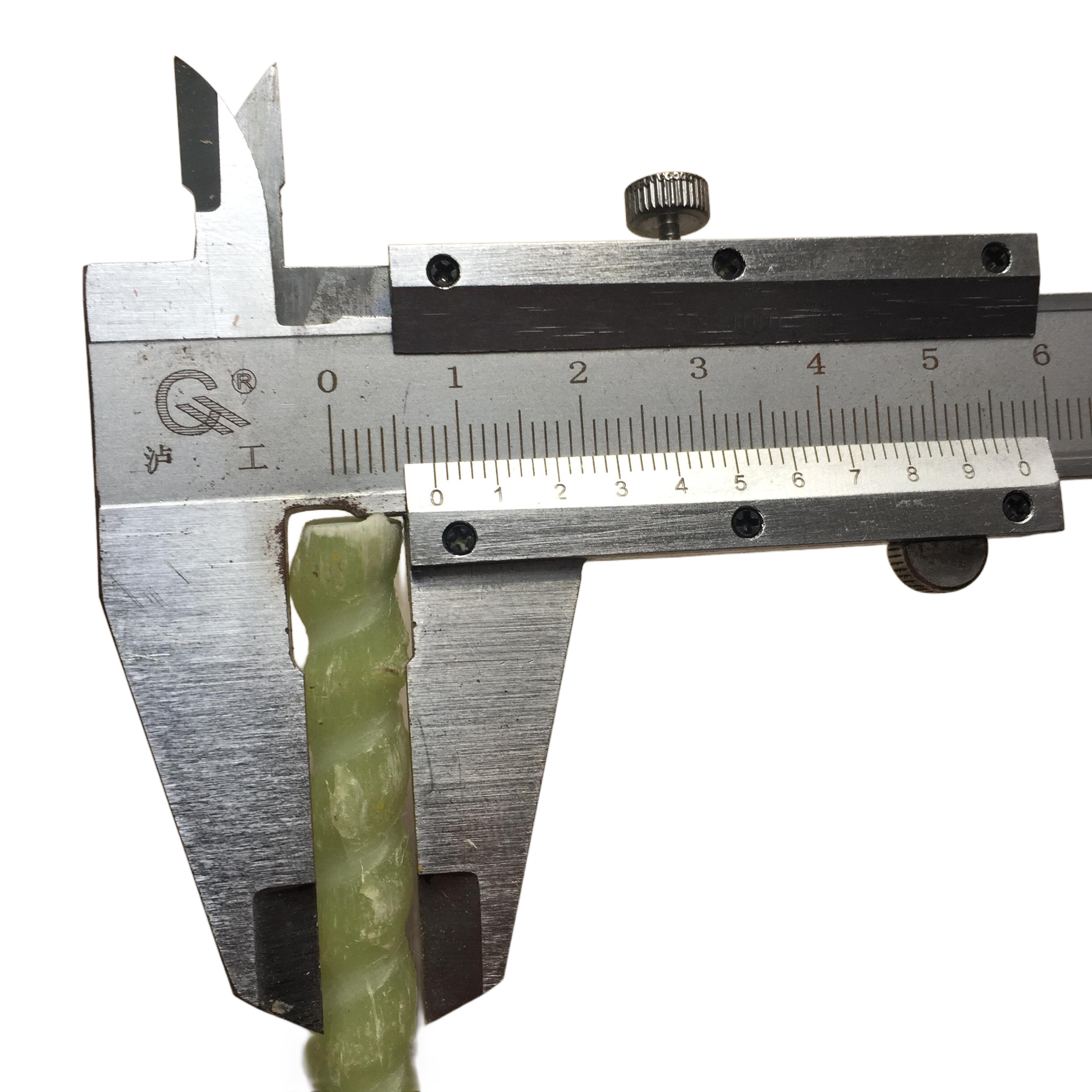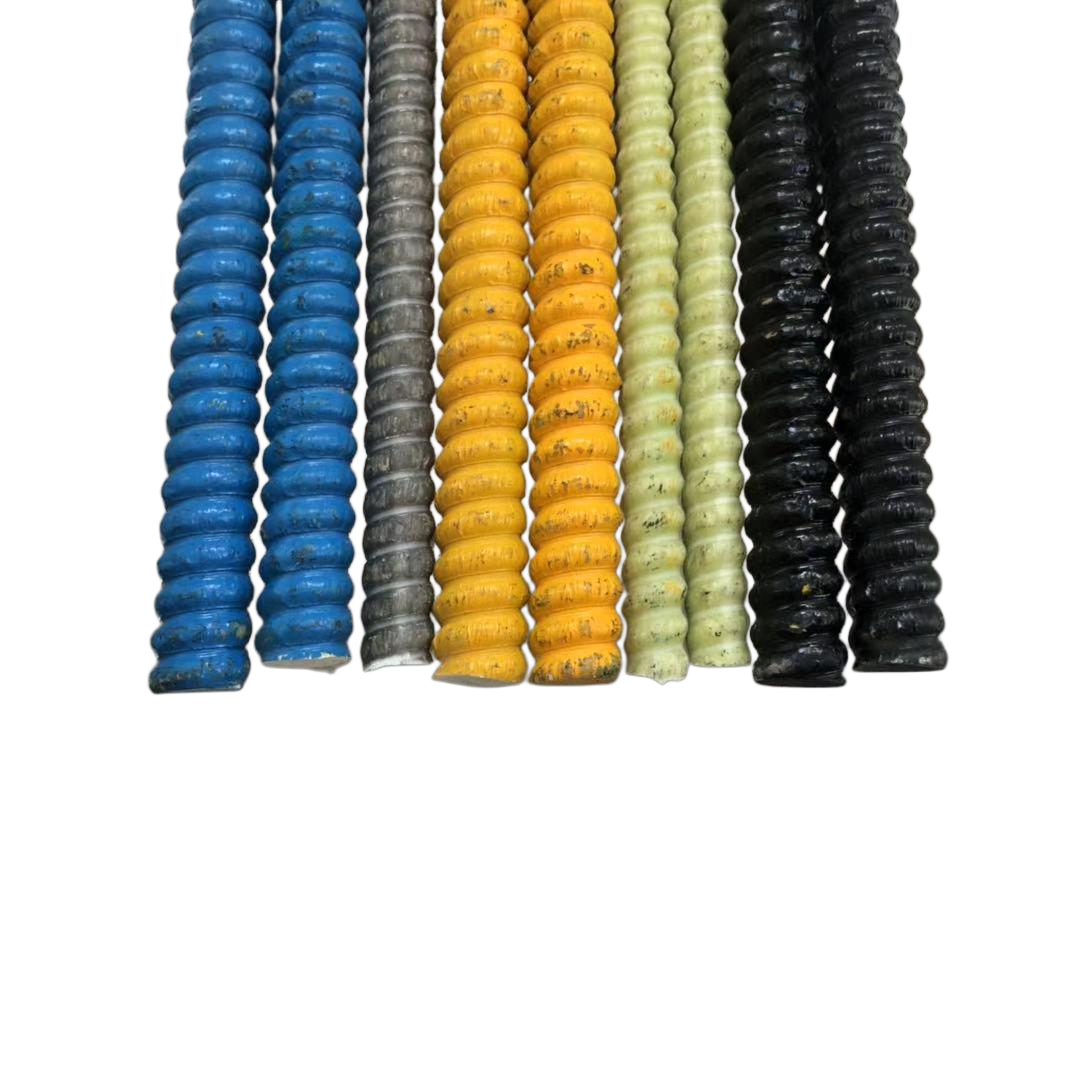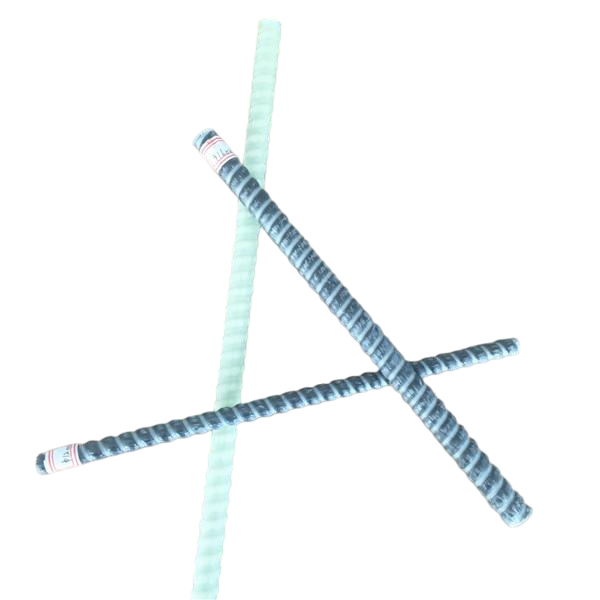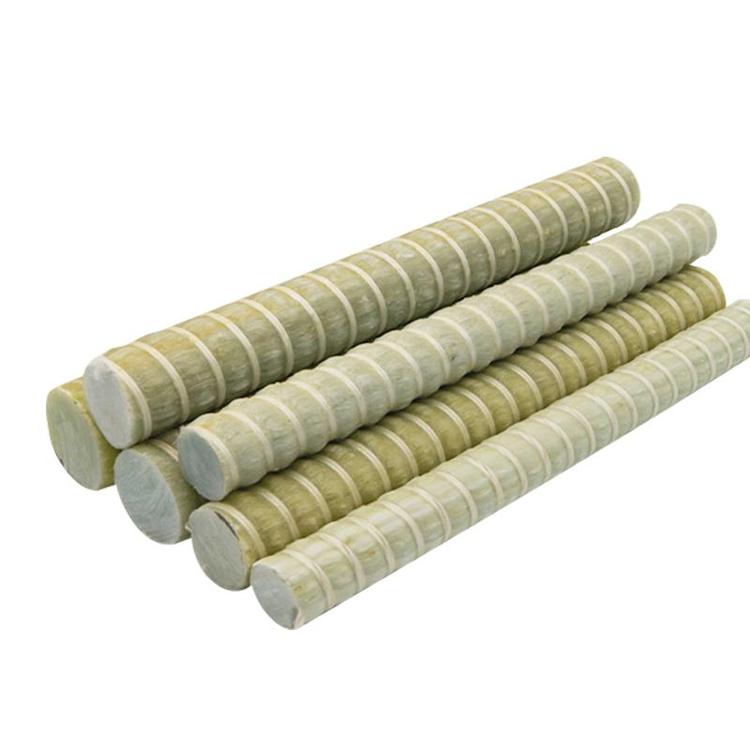Introduction
Glass fiber reinforced polymer (GFRP) rebar, commonly known as glass fiber rebar, has emerged as a revolutionary material in the construction industry. Its unique properties offer significant advantages over traditional steel reinforcement, prompting extensive research and application in various infrastructure projects. This article delves into the characteristics, benefits, and applications of glass fiber rebar, providing a comprehensive analysis of its role in modern engineering.
Mechanical Properties of Glass Fiber Rebar
Glass fiber rebar exhibits exceptional mechanical properties that make it a superior alternative to conventional steel rebar. The tensile strength of glass fiber rebar ranges between 600 and 1200 MPa, which is comparable to high-strength steel. Moreover, it possesses a high elastic modulus, approximately one-third that of steel, allowing it to effectively bear significant loads without permanent deformation. The low density of glass fiber rebar, about 25% of steel's density, contributes to its lightweight nature, facilitating easier handling and installation.
Thermal Resistance
One notable characteristic of glass fiber rebar is its excellent thermal resistance. It maintains structural integrity at temperatures ranging from -40°C to 60°C, making it suitable for extreme environmental conditions. In specific formulations, the material can withstand even higher temperatures without significant loss of strength, which is crucial for applications in fire-prone areas or high-temperature industrial settings.
Corrosion Resistance
Unlike steel, glass fiber rebar is inherently resistant to corrosion. This attribute stems from its composite structure, which does not oxidize or degrade in the presence of chlorides, acids, or alkalies. Consequently, structures reinforced with glass fiber rebar exhibit enhanced durability and reduced maintenance costs over their service life. The elimination of corrosion-related deterioration extends the lifespan of infrastructure, especially in aggressive environments such as marine or chemically contaminated soils.
Advantages over Traditional Steel Rebar
The application of glass fiber rebar offers several advantages over traditional steel reinforcement. Firstly, its non-magnetic and non-conductive nature makes it ideal for use in facilities sensitive to electromagnetic fields, such as hospitals or research laboratories. Secondly, the lightweight characteristic reduces transportation and labor costs during construction. Additionally, the high tensile strength-to-weight ratio of glass fiber rebar allows for more efficient structural designs.
Enhanced Durability
The superior durability of glass fiber rebar leads to longer service life of structures. Its resistance to environmental degradation minimizes the risk of structural failures due to corrosion, which is a common issue with steel rebar. This durability translates into significant long-term cost savings and ensures the safety and reliability of critical infrastructure.
Cost-Effectiveness
While the initial cost of glass fiber rebar may be higher than that of steel, the overall lifecycle cost is often lower. The reduced need for maintenance, repairs, and replacements offsets the upfront investment. Furthermore, the ease of installation and handling efficiencies contribute to overall project cost savings.
Applications of Glass Fiber Rebar
Glass fiber rebar finds extensive applications across various sectors due to its beneficial properties. In civil engineering, it is used in bridge decks, retaining walls, and parking structures where corrosion resistance is paramount. The marine industry employs glass fiber rebar in constructing docks, seawalls, and offshore platforms, capitalizing on its durability in saltwater environments.
Infrastructure Projects
Infrastructure projects, such as highways and tunnels, benefit significantly from the use of glass fiber rebar. Its non-corrosive nature extends the lifespan of pavements and reduces maintenance disruptions. For instance, in tunnel liners, glass fiber rebar eliminates the risk of spalling due to corrosion, enhancing safety for users.
Industrial and Commercial Buildings
In industrial settings, glass fiber rebar is advantageous in facilities dealing with corrosive substances, such as chemical plants and wastewater treatment facilities. Its application ensures structural integrity without the added costs of protective coatings or cathodic protection systems. Commercial buildings also leverage its benefits for structural components exposed to deicing salts and other corrosive agents.
Challenges and Considerations
Despite its advantages, the adoption of glass fiber rebar presents certain challenges. One significant consideration is its lower modulus of elasticity compared to steel, which may result in increased deflections under load. Engineers must account for this in design calculations to ensure compliance with deflection criteria.
Design Standards and Codes
The relatively recent introduction of glass fiber rebar means that design codes and standards are still evolving. While guidelines exist, such as the American Concrete Institute's ACI 440, there is a need for broader acceptance and familiarity among engineers. Ongoing research and case studies aid in refining these standards, promoting safer and more efficient use.
Cost Implications
The initial cost of glass fiber rebar is higher than traditional steel, which can be a deterrent for some projects. However, when evaluating the total cost of ownership, including maintenance and longevity, glass fiber rebar often proves to be more economical. Educating stakeholders on these long-term benefits is crucial for wider adoption.
Recent Developments in Glass Fiber Rebar Technology
Recent advancements have focused on improving the performance of glass fiber rebar. Innovations in resin formulations and fiber treatments have enhanced its mechanical properties and durability. Surface treatments have been developed to improve bond strength with concrete, addressing concerns over shear performance.
Hybrid Composites
Hybrid composite rebars, combining glass fibers with other materials like carbon fibers, offer improved stiffness and strength. These hybrids aim to tailor the properties of the rebar to specific applications, providing engineers with more options to optimize structural performance while maintaining the benefits of corrosion resistance.
Sustainability Aspects
Sustainability is a growing concern in construction. Glass fiber rebar contributes positively by reducing the environmental impact of structures over their life cycle. Its longevity reduces resource consumption related to repairs and replacements. Additionally, efforts are underway to improve the recyclability of glass fiber composites, further enhancing their environmental profile.
Case Studies Highlighting Glass Fiber Rebar Application
Numerous projects worldwide have successfully implemented glass fiber rebar, demonstrating its practical benefits. For example, the reconstruction of bridge decks in North America has utilized glass fiber rebar to address corrosion issues caused by deicing salts. The extended lifespan and reduced maintenance have validated the material's efficacy in such environments.
Marine Structures
In marine applications, glass fiber rebar has proven invaluable. The construction of seawalls and piers in coastal regions has benefited from its corrosion resistance. Projects in the Middle East have particularly seen success, where harsh saline conditions rapidly degrade traditional steel reinforcement.
Innovative Architectural Designs
Architects have embraced glass fiber rebar for its ability to enable sleek and unconventional designs. Its flexibility and strength allow for thin, curved concrete elements that are difficult to achieve with steel. This capability expands the creative possibilities in architectural projects while maintaining structural integrity.
Future Outlook and Research Directions
The future of glass fiber rebar in construction is promising. Ongoing research aims to further enhance its properties and reduce costs. Areas of study include improving the bond between the rebar and concrete, increasing the modulus of elasticity, and developing more sustainable manufacturing processes.
Standardization Efforts
Advancing standardization is critical for wider adoption. International collaboration among standards organizations seeks to unify guidelines, making it easier for engineers worldwide to specify glass fiber rebar confidently. Such efforts will likely lead to increased use in public infrastructure projects.
Educational Initiatives
Education plays a vital role in the adoption of new materials. Universities and professional institutions are incorporating curriculum focused on composite materials like glass fiber rebar. These initiatives aim to equip the next generation of engineers with the knowledge to utilize these materials effectively.
Conclusion
Glass fiber rebar represents a significant advancement in reinforcement technology, offering solutions to many of the shortcomings of traditional steel rebar. Its exceptional properties, including high strength, corrosion resistance, and lightweight nature, make it an attractive option for a variety of applications. While challenges in cost and standardization remain, the long-term benefits and ongoing research suggest a strong future for this material. Embracing glass fiber rebar can lead to more durable, efficient, and innovative structures that meet the demands of modern engineering.
For professionals seeking to enhance their projects, considering the integration of glass fiber rebar could provide substantial benefits in performance and longevity. As the industry evolves, staying informed about such advancements is key to maintaining a competitive edge and contributing to the development of sustainable infrastructure.



























